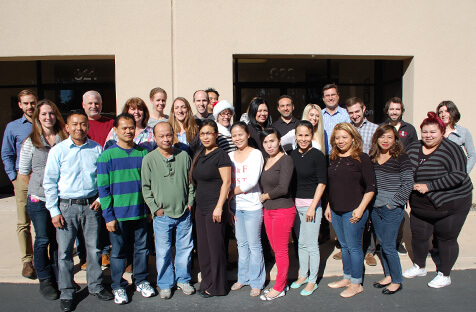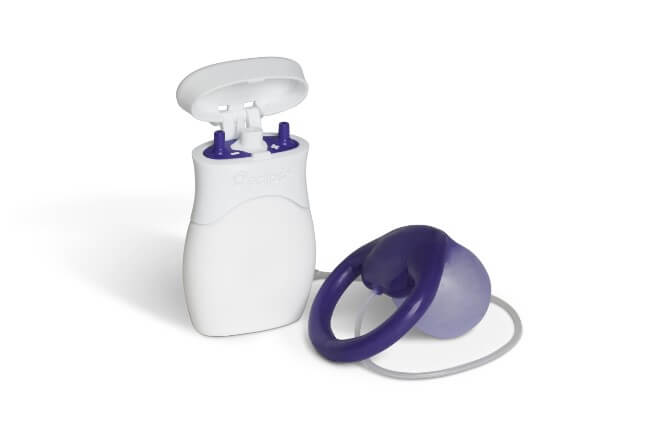Stories
From Need to Reimbursed Technology: Lessons from an 11-Year Journey
 Miles Rosen (back row, far left) and the Pelvalon team.
Miles Rosen (back row, far left) and the Pelvalon team.
When Stanford Biodesign trainee Miles Rosen began investigating how dramatically fecal incontinence (FI) affects women’s quality of life and how few effective treatments are available, he knew he had hit upon a compelling unmet need. He anticipated it would take multiple years to develop, test, and gain regulatory approval for the new solution he and his team envisioned. What he didn’t expect was that it would require an additional six years to achieve Medicare reimbursement and, as a result, a viable pathway to the widespread availability and adoption of this life-changing technology.
In recent years, reimbursement has become the top hurdle facing innovators as they seek to advance new technologies into patient care. In an article entitled “The Need for Accelerated Medicare Coverage of Innovative Technologies: Impact on Patient Access and the Innovation Ecosystem,” Stanford Biodesign researchers quantified the lag between Food & Drug Administration (FDA) authorization and nationwide coding, coverage, and payment for a new technology through the Centers for Medicare & Medicaid Services (CMS). The results of a survey of nearly 400 innovators and investors showed that it takes an average of 4.7 years (and as many as 7.5 years) after a new technology makes it through the FDA to achieve nationwide reimbursement. As noted in the study, this is a devastatingly long time for patients, as well as for small, venture-backed companies – which are often considered the engines of breakthrough innovations in health – because they lack the deep financial resources to sustain their operations while awaiting reimbursement.
Fortunately for women affected by fecal incontinence, Rosen and his co-founder Steve Herbowy were eager to make a difference. They pressed ahead with the work started by Stanford Biodesign Innovation Fellow Jake Brenner and founded a company they named Pelvalon in 2010 to tackle this messy problem. Most often, the loss of bowel control starts between the ages of 47 and 55 and can be traced back to child delivery or a previous pelvic floor trauma. For the roughly 10-15 percent of women who experience FI, it is embarrassing and isolating, and treatment options are limited. Physicians historically advised women to try managing the condition with diet and exercise. For extreme cases, surgery was the only viable option.
To address the gap on treatment options, Rosen, Herbowy, and their team developed a minimally-invasive solution called the Eclipse System that a woman inserts into her vagina like a tampon and inflates to control the rectum. Importantly, the Eclipse technology aligned the interests of the key stakeholders in the need area – patients desperately wanted a solution that was discreet, non-invasive, and effective; physicians were eager for an alternative they could prescribe before defaulting to an invasive surgery that cost $30,000; and, presumably, public, and private health insurers would be motivated to cover the cost of the $1,400 device rather than an expensive surgery.
Even still, Pelvalon had to mount a lengthy and sustained campaign from 2015-2021 to secure a new reimbursement code and payment rate from CMS. This was after the device was cleared through the FDA’s de novo pathway, which provides a path to market for novel devices with a low- to medium-risk profile. In a recent conversation, Rosen shared lessons and key take-aways from his experience navigating the US reimbursement maze.
 The Eclipse System is a minimally-invasive solution for fecal incontinence.
The Eclipse System is a minimally-invasive solution for fecal incontinence.
Clinical evidence is key. Rosen and his team worked with independent investigators to complete multiple peer-reviewed studies of the Eclipse System. First, they focussedon feasibility; “We needed to answer questions like, does the device fit? Is it comfortable? Are patients accepting of a vaginal insert?,” Rosen explained. With those positive results in hand, the company next conducted a study that they used for FDA clearance. “This one was all about demonstrating robust safety and efficacy,” he said. “The study showed that the device was over 80 percent effective, with no serious adverse events. These results were nparticularly compellingconsidering the limited treatment options for this condition. Rosen continued, “After that, we didn’t need to do another study, but we chose to launch a longer trial to validate the prior outcomes and strengthen our case for reimbursement.” The results were nearly identical. “It helps a lot when you have solid evidence from multiple peer-reviewed studies that have been conducted with credible physicians,” he noted.
Line up strong support. “In our case,” Rosen recalled, “we had physicians who were highly motivated. Once they knew about the device, they were frustrated they couldn’t make it widely available to their patients. We pointed them to the people at CMS who were in charge of reviewing our application. Some physicians voluntarily flew to DC to weigh in at the open feedback sessions and explain why this technology is really important. Others wrote letters. It was really helpful for decision makers at CMS to hear the genuine voice of the clinician.” Pelvalon’s network of physicians also engaged with relevant professional societies in the space to help garner support, with multiple organizations issuing recommendations on integrating the Eclipse System into the FI standards of care. Grateful patients played a role too. “We had numerous patients write letters, which was great,” Rosen said. “But having the backing of top-notch academicians and doctors really made the difference.”
Demonstrate real demand. Pelvalon had several physicians from Kaiser Permanente involved in their clinical studies. As part of an integrated health system, with a direct incentive to cost-effectively manage the care of their members, these clinicians showed a willingness to pay directly for the Eclipse System while awaiting reimbursement coverage. “They understood the value of using the device to avoid or delay the much more expensive surgery,” Rosen said. They got approval to begin offering the technology within the Kaiser system, which gave Pelvalon another indicator of product demand. As Rosen described, “We were able to say to CMS that a very cost-conscious system like Kaiser had made the decision to pay directly for the technology because it was cost saving. And wouldn’t it be great for CMS and Medicare patients to realize the same benefits?”
Start early and be persistent. “Like a lot of government bodies, CMS has a finite set of resources, and the process can be slow,” Rosen said. “Staying at it and talking to the right people is critical.” Thinking back, he continued, “I would engage with CMS earlier. In recent years, they’ve undergone some reforms and they care about innovation. They have people who are open to interacting with you and I would take advantage of that sooner.” Of course, he emphasized that it is essential to do your homework before engaging with the agency. “Deeply understand the regulations and standards for creating a new code in your area. That will enable you to build a strong policy case.”
Ultimately, the Eclipse System was granted nationwide reimbursement from CMS in early 2021, marking a major milestone 11 years after Pelvalon was founded. This decision enabled access to the technology for women covered by Medicare, which accounts for roughly half of those who can potentially benefit from the device. The other half are covered by private health insurers. “So that’s our next challenge,” Rosen said. “There’s so much focus on areas such as diabetes and hypertension that it takes a while to get a smaller women’s health device on the radar of these private health plans.” But, with more perseverance, it will only be a matter of time until the technology is reimbursed for all those who can benefit from it.
Meanwhile, Pelvalon was acquired by Laborie Medical Technologies Corp., a privately-held medical device company, in late 2021. As for Rosen, he plans to take a break and then start something new. “For me,” he said, “it has been eye-opening to have gone through this whole reimbursement process. It’s such a need for so many companies that I may pursue an opportunity in that area.”
